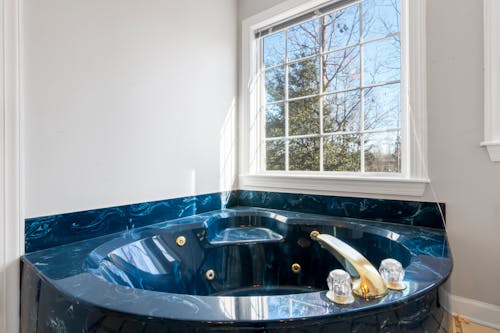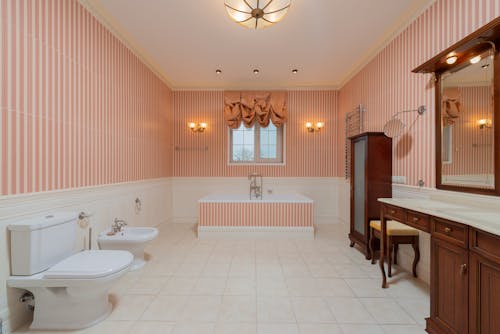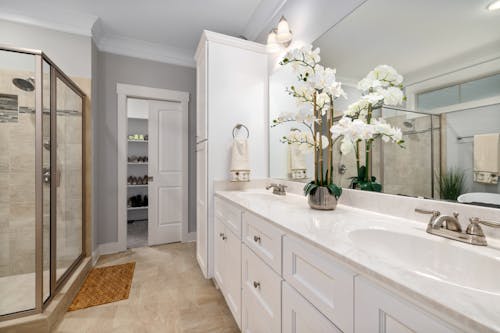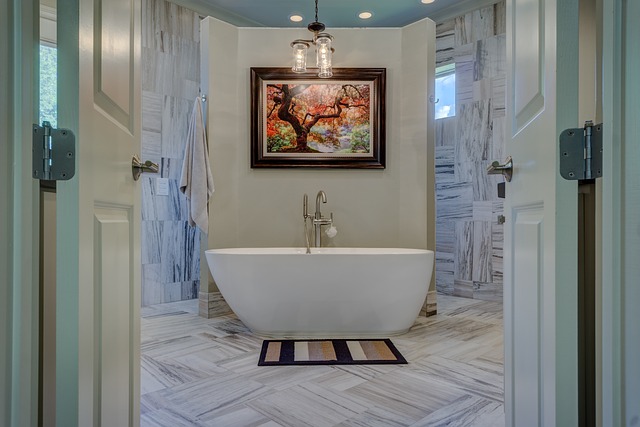Welcome to the Colorful World of Victorian Bathrooms! In this blog post, we will explore the elegance and grandeur of Victorian-era bathrooms.
From intricate details to opulent design elements, Victorian bathrooms have a unique charm that has stood the test of time.
Let’s dive in and discover the beauty of these timeless spaces.
Table of Contents
The History of Victorian Bathrooms

The Victorian era, spanning from 1837 to 1901, was a period of prosperity and innovation in design. As indoor plumbing became more common in homes, bathrooms evolved from simple functional spaces to luxurious retreats. Victorian bathrooms were characterized by ornate decorations, elaborate fixtures, and a focus on privacy and comfort.
Design Elements in Victorian Bathrooms
Victorian bathrooms are known for their attention to detail and elaborate design elements. Intricate tile patterns, clawfoot tubs, pedestal sinks, and brass fixtures were common features in these luxurious spaces. The use of rich wood, stained glass windows, and decorative accessories added to the opulence of Victorian bathrooms.
Color Palette of Victorian Bathrooms
The color palette of Victorian bathrooms was vibrant, reflecting the tastes of the era. Deep jewel tones such as emerald green, ruby red, and sapphire blue were popular choices for walls and tiles. Ornate wallpaper with intricate patterns and motifs was also a common feature in Victorian bathrooms, adding to the overall aesthetic.
Modern Interpretations of Victorian Bathrooms

While traditional Victorian bathrooms are still popular among enthusiasts, modern interpretations of Victorian design have emerged in recent years. Contemporary designers have begun to mix classic Victorian elements with sleek, minimalist touches to create a fresh take on this timeless style.
Tips for Creating Your Victorian Bathroom
Step back in time and cultivate a sense of elegance and refinement with a Victorian bathroom design. Victorian bathrooms are known for their luxurious fixtures, rich materials, and timeless aesthetic. While modern plumbing has thankfully replaced some of the quirks of the era, you can still capture the essence of a Victorian bathroom in your own home. Here’s a guide to help you achieve this classic look:
Bathtub Bliss: The Centerpiece of a Victorian Bathroom
Without question, the bathtub is the main attraction of a Victorian bathroom. Invest in a freestanding clawfoot tub made of cast iron for the ultimate Victorian bathroom experience. These tubs are available in several configurations, from slipper to roll-top. Add a showerhead attachment with a porcelain or brass spray for an added touch of luxury.
Lavatory Refinement: Elegance at the Sink
While a pedestal sink is a classic Victorian choice, you can also consider a vanity unit with marble or granite countertops. Look for ornately designed faucets with porcelain handles and exposed pipes for an authentic touch. Don’t forget a matching high-flush toilet to complete the elegant ensemble.
Flooring and Walls: Setting the Stage for Sophistication
Victorian bathrooms often featured patterned floor tiles in black and white, geometric designs, or floral motifs. For a more budget-friendly option, consider vinyl flooring that replicates these classic patterns. Wall treatments can include wainscoting painted in calming colors like light green, blue, or cream. High-quality wallpaper with floral damask patterns is another beautiful Victorian touch.
Lighting and Accessories: The Finishing Touches

In your Victorian bathroom, lights or wall lights with shiny glass shades or cloth coverings will provide a cozy and welcoming ambiance. To match the décor, add rugs and luxurious bath towels in colorful patterns. The room will be further elevated with standing towel racks and elegant soap dishes made of gold or nickel.
Don’t Forget the Details:

Small details can truly bring your Victorian bathroom to life. Framed botanical prints, vintage apothecary jars filled with bath salts or cotton balls, and an ornately framed mirror can add a touch of personality. A plush bathrobe hanging on a decorative hook completes the luxurious experience.
ByKey Considerations for a Functional Victorian Bathroom
While aesthetics are important, functionality is key in any bathroom. Here are some things to keep in mind:
- Ventilation: Victorian bathrooms often lacked proper ventilation. Ensure your bathroom has adequate ventilation to prevent moisture build-up and mold growth.
- Plumbing: While the clawfoot tub and pedestal sink add undeniable charm, consider their practicality for your needs. Clawfoot tubs can be quite deep and require more space, and pedestal sinks often lack storage.
- Mixing Modern and Vintage: There’s no shame in incorporating modern amenities like heated towel racks or shower enclosures into your Victorian bathroom design. The key is to choose elements that complement the overall aesthetic.
With careful planning and attention to detail, you can create a stunning Victorian bathroom that is both stylish and functional. So, embrace the grandeur of the past and indulge in the luxurious comfort of a bygone era.
Conclusion
Victorian bathrooms are a tribute to class, competence, and classic style.You may design a room that is both elegant and practical for your bathroom by bringing in the complex features and rich components of Victorian design.The elegance of Victorian bathrooms is likely to inspire and delight, regardless of your preference for a classic Victorian style or a contemporary version. Begin constructing your own Victoria.
What are the key characteristics of a Victorian bathroom?
Victorian bathrooms are known for their ornate designs, featuring high ceilings, decorative tile work, clawfoot tubs, pedestal sinks, and elegant fixtures. They often incorporate rich colors, bold patterns, and intricate details, creating a sense of grandeur and sophistication.
What are some popular materials used in Victorian bathrooms?
Marble, ceramic tile, cast iron, and brass are commonly used materials in Victorian bathrooms. These materials add a sense of elegance and durability to the space, reflecting the Victorian era’s emphasis on craftsmanship and quality.
What type of fixtures are typically found in Victorian bathrooms?
Clawfoot tubs, pedestal sinks, exposed shower pipes, and ornate faucets are typical fixtures in Victorian bathrooms. These fixtures often feature intricate designs and polished finishes, adding to the overall aesthetic appeal of the space.
How can I incorporate Victorian elements into my modern bathroom?
Adding a clawfoot tub, installing a pedestal sink, using patterned tile work, and incorporating vintage-inspired fixtures can help bring a touch of Victorian charm to your modern bathroom. You can also use rich colors, bold patterns, and decorative accents to create a sense of grandeur and sophistication.
Where can I find inspiration for Victorian bathroom design ideas?
Online resources like Pinterest, design blogs, and home improvement websites offer a wealth of inspiration for Victorian bathroom design ideas. You can also visit historic homes and museums to see examples of authentic Victorian bathrooms.

